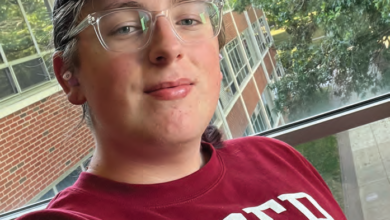
Lost but not found: the horrific history of Indigenous trafficking
By Tristan E.M. Leach
OVER the summer, there were many shocking news stories. From Hurricane Hilary, to the government holding a congressional hearing on aliens, there was no shortage to what a conversation could center around. However, too quickly, the news of a Native American girl being found in the barracks at Camp Pendleton in Oceanside, California, appeared to be overlooked. This may seem like another story of a missing child found, but the depth to the story is deeper than many of us acknowledge.
Let’s start with some facts about the case. First, a 14-year-old girl ran away from home. According to Saved In America, an organization dedicated to helping families and law enforcement locate missing children, within the first 48 hours of a child running away, they will be approached by a trafficker. Second, the girl was reported missing on June 13 by her grandmother. Third, the girl was found in a Marine’s barracks on June 28 in Camp Pendleton, one of the biggest Marine Corps bases in the United States.
The girl was allegedly bought from a trafficker by a Marine who is currently stationed at Camp Pendleton. It is unknown how the Marine managed to get the girl onto the base or how he was able to keep her from being discovered for so long. The Marine, an unidentified man, was initially allowed to return to his position after the girl was discovered. The girl alleges that the day before she was discovered, the Marine in question sexually assaulted her.
As of Aug. 17, the Marine was at a preliminary hearing where charges were read out and it is now in the hands of the Military Courts. The Marine is not exempt from being taken to civilian court on both state and federal levels and it is most likely he will be.
So, why is this case such a big deal? Children go missing,unfortunately, every day and luckily many of them are found every year. The same can not be said for Native American children, especially Native American girls.
According to Katie Couric Media, in 2020 alone, 5,295 Native American girls and women were reported missing. These numbers are, unfortunately, not surprising at all. Since the colonization of the United States of America, Native Americans have been treated as second class — having their land stolen, women being sexually assaulted and forced to marry the wealthy men who took their way of life and their children being taken from them.
Native American people began to work for those who had taken over their land to keep themselves alive in a society that did not care for them. In Canada in the 1830s, the first residential schools began to pop up. In the late 1860s, the schools, which were church-ran, made their way into the United States. Native American children were forcibly placed into these schools after being abducted by government officials.
Here, the children were punished for speaking their native language, forced to cut their hair and give up the way they dressed and taught how to be a “proper” member of society. On top of that, the Native children were taught that the religion they practiced was immoral and that they and their parents were evil.
Trafficking of Native American peoples, especially women and girls, can be traced back to the beginning of the America we all know today. This 14-year-old girl is one of the few who has been found, let alone found alive. This case is unique since she was discovered and the man who bought her is being brought to justice; however, for every missing child, this is not the case, most certainly for those over 5,000 missing Native American children and women.



